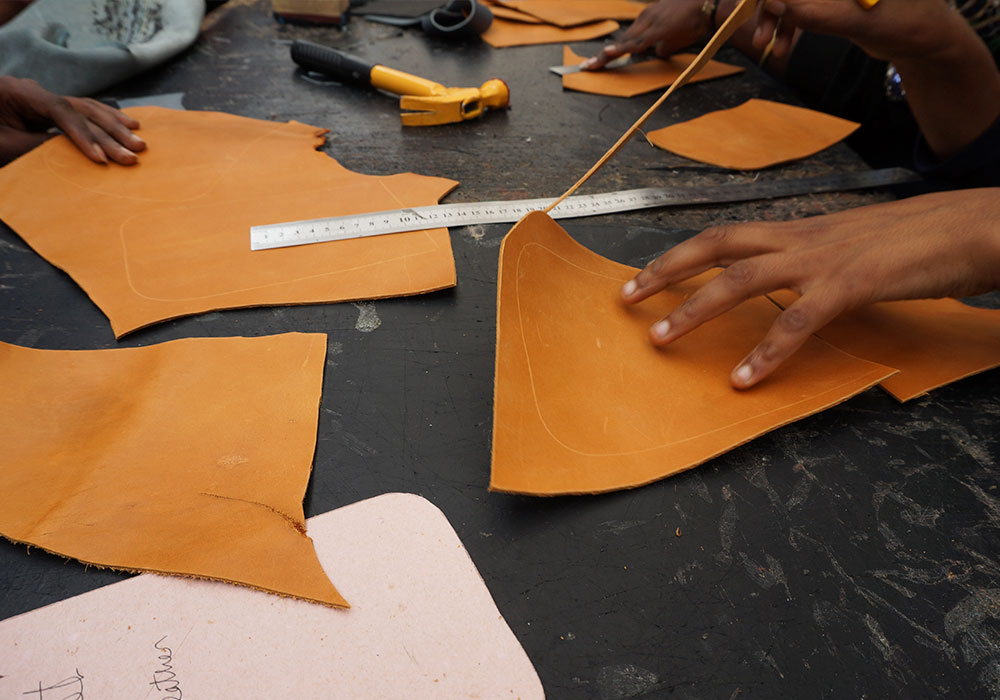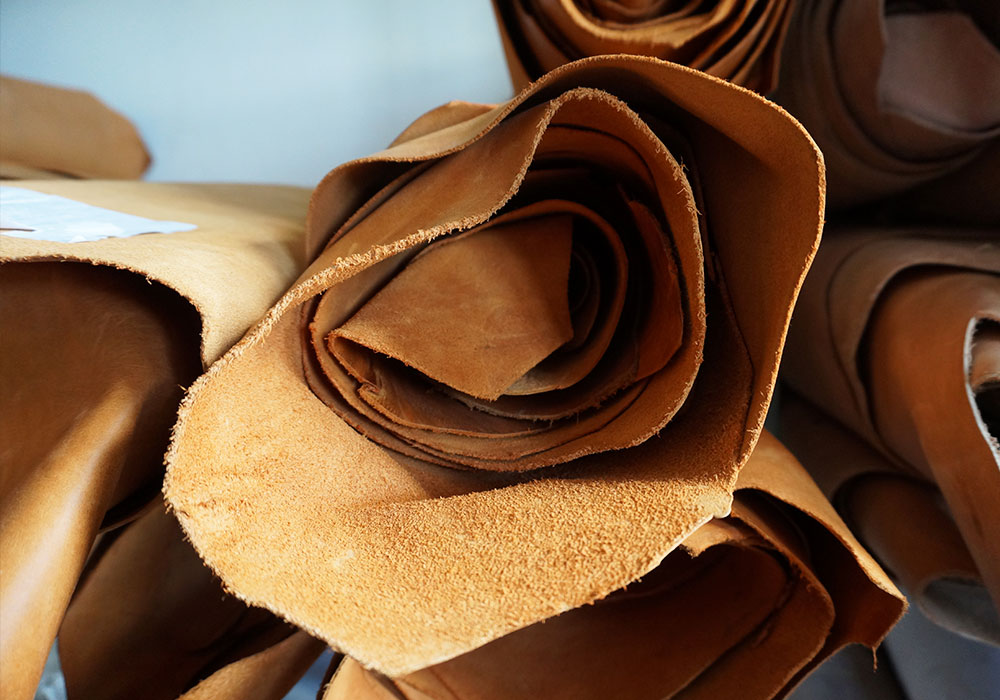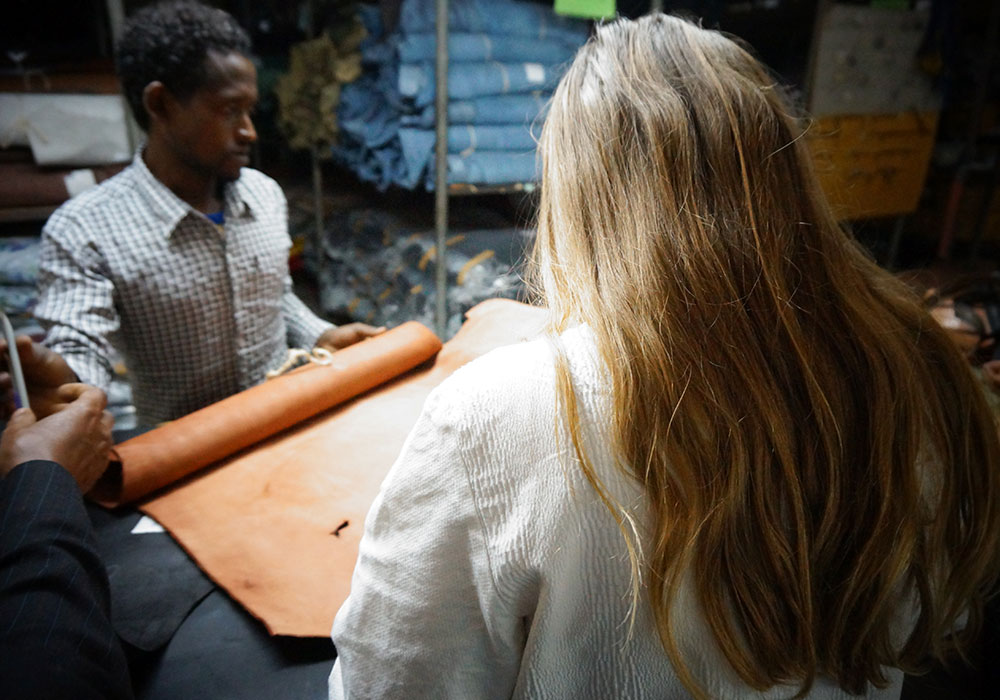All about leather
Leather treatment: A guide to Maintenance of leather furniture, leather bags, shoes, etc.
Leather treatment: A guide to Maintenance of leather furniture, leather bags, shoes, etc.
Leather is a widely used material both for bags, but also for leather furniture, shoes, jackets and much more!
There is nothing to say about that. Leather is a fantastic material; it is beautiful, durable, flexible, durable and not least vibrant - unlike many other materials.
If you give your leather product the right treatment, there is a high probability that you can enjoy the product for many years to come.
For many it may seem like a demanding and unmanageable project to have to maintain leather, but in fact it does not require much. Even with a little effort, one can do a lot for the durability of the leather.
Treatment of leather and leather types
Precisely because leather is used for a myriad of products such as furniture, shoes and bags, there are also a myriad of leather types. Without background knowledge about the production or tanning of the leather, it can therefore be really difficult to know exactly how to care for the leather.
In addition to this, one can also find a myriad of care products on the shelves or on the internet. In the past, most oil and types of leather grease were used, but today there are wipes, all-in-one products, impregnation against weather and dirt, conditioner and much more!
In this guide to the care of leather, I have therefore gathered three good tips on how to best approach the maintenance of leather.

Care and treatment of leather products
As a rule of thumb, I recommend looking for the relatively classic care products; leather grease and impregnation.
This is because once you have these products at home, they can actually be used for the vast majority of leather products. It's everything from your furniture to your crossover bags. These products usually work well and effectively.
It only becomes unmanageable if you have to buy a new product for every single thing in leather!
I also want to emphasize that I do not take responsibility for the treatments below on your particular leather product, as I have not seen the leather in real life. For the same reason, I also always recommend starting by treating a small part of the back, an inside or another area that is not visible. This allows you to see if the leather reacts as expected and desired, and ensure that you do not damage e.g. your furniture or your bag.
Here are the best tips for caring for leather from MicMic:
1. Look for a guide
It may say itself, but I have nevertheless chosen to point it out at this point. If you have bought a new product in leather, there is often an accompanying guide on how to take the best possible care of the product. If the product is bought online, it is often under the product e.g. under a point called “care”. If this is not the case, it is usually possible to call or write to the store and get their recommendations.
It is important to care for the product properly as one can actually end up doing more harm than good if the product gets a wrong treatment.
You are also always welcome to ask me for help and guidance. I will do my best to help you on the right path.
2. Leather grease - how to use it
Some types of leather scream for moisture!
If the leather tends to crack or it shows other signs of being dry, the solution is often leather grease. You can kindly compare the leather with your own skin when it is dry.
Therefore, the effect of leather grease can also be compared to the effect of a moisturizer.
However, I would point out that leather grease can give the leather a darker color or shade e.g. if you use it on light / neutral core leather. Therefore, it is again important to test the grease in a small, discreet area so you know what your product is going to look like.
If you go with the grease, it is also important that it is spread in a thin layer and as evenly as possible. This way you avoid dark spots or stains. You can use a clean sponge or a dry soft cloth for this purpose.
Personally, I am very happy Gold Quality Leather Grease, as this product contains many natural ingredients such as beeswax.
In addition to giving fat, the product also has a mild impregnating effect, which is just a plus.
Care of suede, nubuck and similar leather
I really love these materials, and think it's unbelievably beautiful leather - however, I also think it can be really hard to keep nice.
Fortunately, you also have to do relatively little with suede to keep it neat for a long time.
Suede and nubuck can feel and look very similar. But in fact, suede is the inside of the skin, in while nubuck comes from the grain side i.e. the outside. However, the two types must be treated and maintained in the same way.
What characterizes them is their soft, rough surface. You can often sense small "hairs" that can be seen back and forth. Perhaps you have noticed that bumps or wear on the leather cause obvious wear on the affected point? This is also typical of this type of leather.
These types of skins are very susceptible to both liquids, light and dirt. Therefore, I would always recommend getting the product treated before use.
I recommend that you first brush the leather clean of dirt and dust with a completely soft brush. After this, an impregnation in spray is a good protection.
It has a protective "membrane" over the product that makes it more resistant to liquids and wear.
A spray will usually lie in an even layer and not change the appearance of the product. This maintains the original look, color and texture.
If the product becomes worn, you can also buy special care products only for suede, which can help to "tear" the structure again.
I have also heard that one can keep the suede over hot steam from e.g. boiling water, as porn is thus opened (just like when you are in a hot bath or sauna). This way you can more easily clean away dirt. However, I will hasten to add that I have never tried this trick, so it must be at my own risk. At MicMic, I only have a single product in suede.
In addition, it is my recommendation in general to be a little more careful and watchful with the skin.

Leather at MicMic
At MicMic, I work with several different types of leather.
All mine shoulder bags is, however, sewn in aniline and semi-aniline leather.
What characterizes these types of leather is that the leather has a very natural look. The result is as close as possible to the appearance of the original leather. This also means that any scratches, stains, blood vessels, fly bites, scars and the like on the animal's skin will often be visible in the finished leather.
Aniline leather is also characterized by the fact that it achieves a lot of patina when the product is used. The same goes for the bags here at MicMic - in fact, some of the products change color over the years!
Skins of the highest quality / sorting are used for aniline and semi-aniline leather. Even if you choose the finest skins, you will often be able to see the unique characteristics of each skin. Since one just uses highest quality hides for this leather, I usually say that scratches, scars, etc. should just be seen as a sign of quality.
Lower quality hides are often used for bags or furniture that have a strong color or for leather that gets a "pattern" in. This is because this cover color, surface protection and pattern can hide the "defects" (scars, scratches, etc.) in the leather. At the same time, this type of leather does not get the familiar patina and can often appear "stiffer" in the skin. The practicality of this type of leather is that it is robust and practical, as dirt and other things do not necessarily make marks and stains.
If you are looking for leather furniture, you can read more about the pros and cons here.
If you have questions about leather treatment, or if you have fallen in love with a MicMic bag and are in doubt about how to treat it, you are always welcome to contact me!
The best greetings,
Michala



Dear Annika,
How wonderful to hear!
You are absolutely right - I am actually in the process of making descriptions / care labels for all products, but have not gotten through yet :-)
However, you have several options with this:
1. If you do not mind stains, quick patina, etc., you can actually use the bag immediately.
For example, I have not treated some of my things in this particular leather, as I do not mind that the leather "accepts".
2. If you want to take extra care of the bag here from the start (over time it will get patina regardless), I would recommend impregnating it with a spray. It also makes the bag repellent to liquids (which might be very smart for a diaper bag: p).
I would not immediately recommend grease for the diaper bag, although of course the leather is not damaged by it - on the contrary.
However, I could well imagine that it will naturally get fat when used e.g. from one's fingers (mine has at least got it). If it is left for a few years, after which you use it again, it is a good idea to give the leather a little moisture.
I hope you could use the answer!
Have a great day.
/ Michala